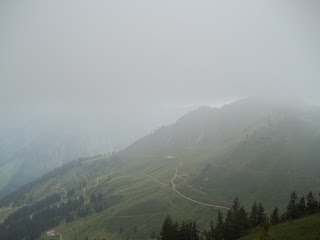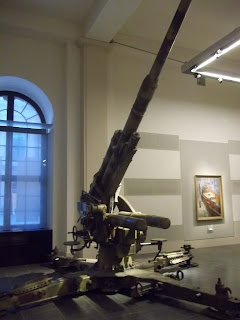I snapped this one in rural southern France, where I stayed for a week with a French family that my mother knows. I'm not going to write about this one much, because my research was done by the time I made it there for my last week in Europe, and as far as I'm concerned that relieves me from blogging duties. It was pure vacation for me.
I will just say that the Giraud family really made me feel at home, and more than anyplace else I went this whole summer I wish I could have stayed longer. It also helped that Alain, the retired professional French chef in the house, cooked four course meals for lunch and dinner every day. Ah...
In case you don't recognize this one, it's Amsterdam. The same thing about vacation goes for it.
What I really want to talk about in my last blog post is how my whole summer experience affected my plans for the future. I've got dozens of pictures of breathtaking sights and intriguing surprises scattered throughout all my summer blogs. I saw Germany, Italy, France, Austria, and the Netherlands all in one summer. I goggled at the pope in a Vatican window. I skimmed over Ann Frank's original diary in the same place she wrote it. I dipped my feet in the canals of Venice. I brushed my hands along the remnants of the Berlin wall. I was swallowed by a cloud on the top of the Alps. If you want to read about my adventures, go ahead and peruse through the blog archives, but I haven't talked about what this experience will mean for my plans from here on out.
One goal I had for the summer I had was to become more proficient in lab techniques so that I could work more independently when I came back to Emory. That one was accomplished. I'm more proficient than I ever wanted to be in PCR, gel electrophoresis, transformation, and mini-prep than I ever wanted to be, to tell you the truth. But after having worked back in my lab at Emory for a few days at Emory, I'm glad. I work on my own schedule now!
I was also hoping to learn a few entirely new things, and I did that too. Not only did I enjoy learning about lasso peptides, an entirely new surprise in biochemistry for me, but I learned how to interpret mass spec results near the end of my stay in Marburg. It seems very useful, and applicable to many kinds of problems. I imagine that I will use it in my research in the future.
Of course, the most useful part of my experience for going forward may be the least obvious. I've taken up work every summer for the past few years, and by the end I was always ready to go crazy, always convinced that there was no way I could continue doing what I was doing for the rest of my life. More than the language barrier, more than being alone in a foreign country, that was my biggest fear for this summer. I was terrified that the research path that I had envisioned for myself after college would be overturned when I actually spent fifty hours a week doing research and found that I didn't really like it. To my tremendous relief, I never came to that conclusion. There were times where I felt like throwing my barren petri dishes out the window, to be sure, when I felt like slowly dismantling my pipette after punching its stopper for the five thousandth time (my graduate mentor actually encouraged me to use more profanity in the lab. He said it made the experiments more likely to work). Yet, at the end of the summer, I wanted to continue. I was getting data, and I wanted to know how it would all turn out. I wasn't even ready to leave. From this experience, I've finally convinced myself that I want to go to graduate school after chemistry, that I want to pursue research with my life, and that I will be happy with it.
Thanks to everyone in the Marahiel lab at the University of Marburg for accommodating me, and making me feel welcome. Thanks to Emory and everyone involved there for providing me this opportunity. Thanks Leah.










































